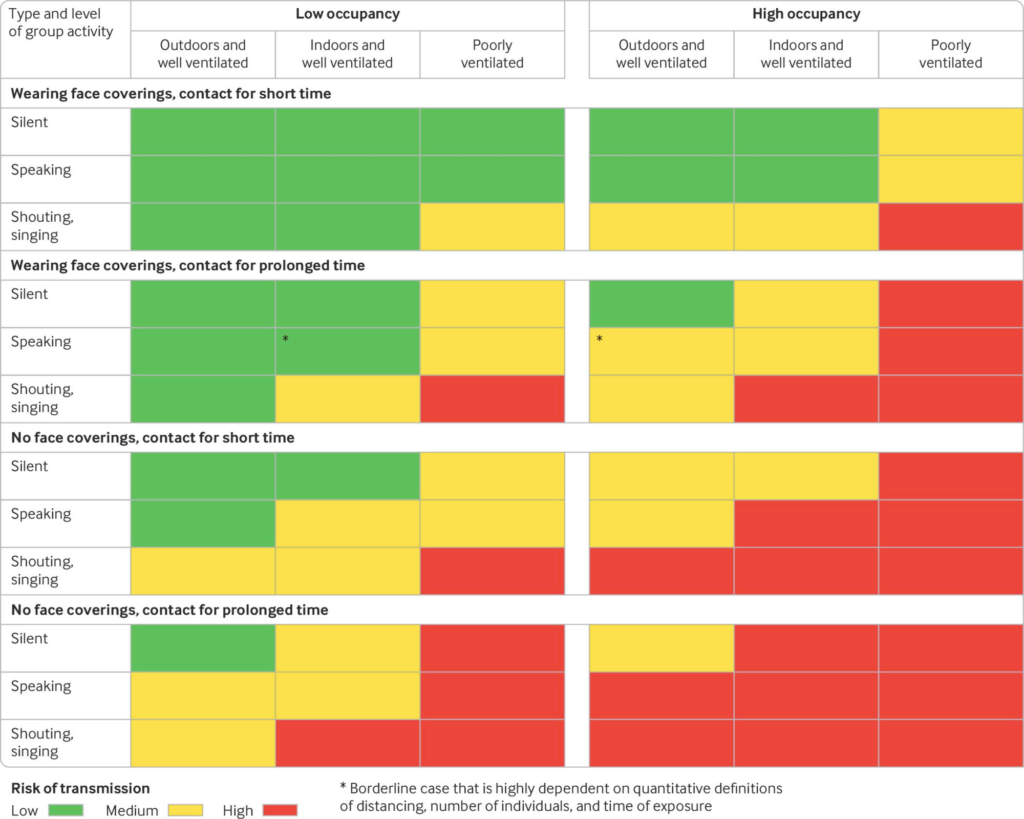A: Not by itself.
Important additional considerations include:
• Ventilation
• Number of people in the room
• Duration of contact
• Type of activity (silent, speaking, shouting/singing)
• Use of masks
Why are these additional precautions needed? Don’t airborne droplets fall to the ground within this distance?
The history of the 6ft/2m distancing rule began over 100 years ago with the study of how droplets were emitted during speech, coughing, and sneezing. In early studies most (but not all) large droplets were found to fall within 1-2 meters, gradually entrenching the idea of the 2m rule.
More recent evidence has shown projection of large respiratory droplets from coughs and sneezes well beyond 2 meters.
More importantly, as we have been highlighting in recent posts, there is growing scientific consensus that droplets are not “large” or “small,” but exist in a continuum of sizes.
While large droplets typically drop within 1-2 meters (3-6 feet), smaller droplets or “aerosols” are light and thus can travel greater distances and accumulate in poorly ventilated rooms.
Importantly for SARS-CoV-2, asymptomatic and pre-symptomatic spread is common, implying a more important role for smaller particles exhaled during talking and breathing rather than coughing or sneezing.
Forced exhalation such as singing can generate higher momentum clouds of exhaled air, which can stay more concentrated and travel up to 7-8 meters (23-26 feet).
These risks can compound in crowded, noisy indoor environments (with loud talking/shouting) such as meatpacking plants and bars and restaurants.
Respiratory droplets and aerosols are much more quickly diluted outdoors, the basis of encouraging outdoor activities wherever possible.
The attached chart provides a framework for assessing the interaction of these risk factors. Note this is a “qualitative” figure in that it is not based on a model with specific numbers and probabilities of risk, but is meant to provide a general guide to decision making.
BOTTOM LINE: Risks are complex and interacting. Physical distancing by itself, especially in indoor environments may not be enough.
In the highest risk situations (indoor environments with poor ventilation, high numbers of people, prolonged duration of contact), it’s important to emphasize physical distancing beyond 2m/6 ft, minimizing the time of exposure, and use face masks.
Love,
The Nerdy Girls

Link to full BMJ article with figure
Practical info about ventilation
Excellent coverage of current knowledge about aerosol transmission


